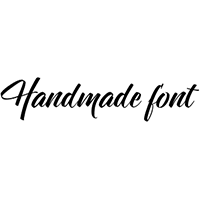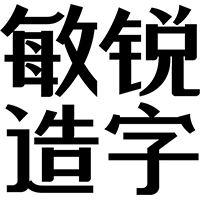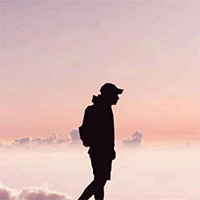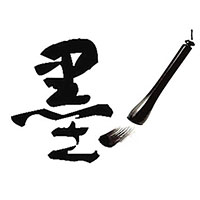My Type of Music: Interpol, Underworld, Grinderman, Linkin Park, Mark Ronson, John Legend & The Roots, Neil Young

To be honest I originally was reluctant to previous instalment of My Type of Music had turned a August episode of ScreenFonts helped Stephen Jackson find out what typeface was used on the movie poster for A Film Unfinished. And when I announced I had started writing this post Michael wanted to know if The Walkmen's Lisbon would be included. I know my 1000+ followers don't compare to the hordes following some of my peers, but together with the comments here this could potentially help generate a meaningful dialogue with the readers of The FontFeed (and Unzipped). And that's the true reward of this blog.

You can judge Old Punch Card, the third solo album by Sea and Cake singer Sam Prekop by its cover. This collection of noisy, jagged synthesizer music inspired by early music concrete and electronic music is packaged rather predictably in an abstract painting with minimalist repetitive elements. It's nice, but doesn't grab me like for example Fennesz' Endless Summer did, both visually and musically. I respect that one may want to lay down some rules when composing conceptual music. If however the resulting music is not that exciting, maybe it's not such a bad idea to ditch those rules, or establish different ones.
All lowercase light Helvetica is a no-brainer for this modernist piece. The seemingly random setting is actually well thought out – see how the "l" in "old" visually extends into the middle stem of the "m" of "sam", making the descender of the first "p" of "prekop" fit snugly in the word space between "old" and "punch", and the last "p" just after the final"h" in "punch".

Oh dear, how many times do I have to say this? Slapping a removable sticker on an untouched piece of original art is not what I consider graphic design; it's plain laziness. The strength of truly good designers is that they manage to beautifully combine type and art. Expertly integrating words and letters into an image enhances both, making the resulting album art superior to its separate components.
I agree the falling horse on Dark Is the Way, Light Is a Place, the fifth album for alternative rock band Anberlin, is a stunning visual. Astonishingly this is not a photograph, but a superb hand-drawn charcoal painting by Australian artist Michael Zavros. In the opinion of the band "Falling August is some of the best artwork we've seen in years. It just seems to fit perfectly with what we were feeling for these songs."
But that silly black circle simply doesn't cut it for me. The band name is set ITC Avant Garde Gothic with some added serifs (or ITC Lubalin Graph with some removed), and the album title in Helvetica Oblique. It's a lousy, boring solution, and you know it.


I don't understand why rock-and-roll legend Jerry Lee Lewis' second album of duets is called Mean Old Man. I mean, will you look at him? There's two versions of the album cover, and the Killer looks absolutely adorable in both pictures! The compact sans Compacta was chosen for the typography.

The gritty, wood type-like wide slab serif on Reckless, the follow-up to Grammy-nominated bluegrass group Steeldrivers' self-titled album, is a perfect match for the rusty train axles and wheels in the cover image.

There is something ethereal about the album cover for Kaleidoscope Heart, the sophomore release by singer-songwriter Sara Bareilles who has been compared to everyone from Norah Jones to Billy Joel. The hazy colours of her mirrored portrait and the superimposed translucent radial lines refer to the kaleidoscope in the album title in an unexpected way.
Recognising hand written scripts has never been my forte – the identical repeating characters tell me it is a font – so I'll just mention our two FontLists of Quick, Natural Scrawling Handwriting and Antique Handwriting. The monospaced face used for the album title is Orator.

Just like all their album covers, the artwork for Personal Life – an album full of fist-pumping rock anthems about relationships and regret by Portland's indie-punk trio – was designed by The Thermals themselves. The collage has a distinct middle-of the-20th century aesthetic going that reminds me of Bauhaus collages and American pictorial magazines. The type is a combination of a blotchy lowercase sans similar to News Gothic, and Orator again I think.


Interpol, the fourth, self-titled release by the NY-based band highlighting their dark-themed, post-punk style, features an exploding three-dimensional version of their most recent logo. This extreme extra bold geometric design does some interesting things with mirrored and rotated shapes: one half of the split "T" becomes the "L". The way the "E" merges into the "R" is really neat, with its diagonal reprised as the counter of the "O". It's as if the designer took a good look at the ITC Avant Garde Gothic Alternates & Ligatures and decided to take that concept one step further.

The album cover for Body Talk, Pt. 2, the second part to the trilogy by Robyn, looks like a contemporary art photograph. A burst of cones made out of folded coloured paper erupts from the Swedish pop artist's ear, a symbol for the eclectic mix of techno-pop, dance, and hip hop found on the album. It features yet another incarnation of her Art Deco logo, this time superimposed on the cover image in transparent pink brush strokes. The curl at the bottom of the leg on the "R" nicely encircles the singer's eye, as if she were wearing a mask, a sexy lady Zorro or pink super heroine. Oops, got a little carried away there! ;-)

I wonder if the album title and/or the collection of bird drawings on Losing Sleep, the first album of new songs since 2002 from Edwyn Collins, has any symbolic meaning relating to the two strokes the ex-Orange Juice singer survived in 2005. The all lowercase proportional typewriter face is the classic ITC American Typewriter.

The beautifully aged black and white portrait of Orenda Fink and Maria Taylor used for Drawing Down the Moon – their return as Azure Ray after disbanding in 2004 – was augmented with the somewhat mundane Garamond Premier and Century Gothic.

Castle Talk by indie rock outfit Screaming Females sure has a crapalicious album cover. I don't understand why many indie bands seem to pride themselves in promoting their music with the most amateurish-looking artwork ever. The hand drawn lettering is ridiculously poor, and can anyone say Guernica? Sheesh…

I am intrigued by the sci-fi type on Album of the Year, which sees Detroit producer Black Milk introduce some funk and rock music with a backing band. Probably the best way to create a similar effect would be to take a wide square sans serif like Eurostile Extended, turn it into outlines, and then remove half of the character shapes, mainly the counters and inner sections. Seems like a fun experiment. The geometric sans in black and red is ITC Kabel.

Multi-coloured psychedelic lettering graces the album cover for Heretofore, a six-track album by rootsy North Carolina ramblers Megafaun, the band led by Phil Cook.

Harlem River Blues, the third album by Justin Townes Earle, the son of Steve Earle, features a splendid brooding picture in subdued hues by Joshua Black Wilkins. It pictures the singer together with Rachel Holder, a friend of the photographer's girlfriend in Muscle Shoals, Alabama. Their soaked clothes cling to their bodies, suggesting they have just taken a swim in the river, fully clothed, or maybe it's the torrid heat. Besides being an amazing photographer, Wilkins also is a musician in his own right.
The lettering on the cover is of course hand written. While laying out the artwork, Wilkins had Justin write his own name and album title many times on paper, so he could use that for the album cover instead of a computer font. This turns the design into a very personal, intimate statement, as if we're allowed a privileged look into the Earle's private photo album.

As usual all artwork for Barking, which in many ways represents a new chapter for British electronic duo Underworld, was done by John Warwicker of Tomato, the collective of artists, designers, musicians and writers founded in 1991. The interview with designer and illustrator Heath Killen mentions:
The tradition of collaboration that has occurred between Tomato and Underworld seems to now be informing the music, as each track features a guest producer. It's truly exciting to see a band and design studio continue to push their already considerably expanded creative boundaries.
In this interview John Warwicker talks in more detail about the creation of the artwork. The stencil serif type used throughout all collaterals is similar to Le Corbusier's design that was the inspiration for FF Flightcase, but with a matching lowercase. Stencil Full comes reasonably close.

With Who We Touch, the album produced by Martin Glover for The Charlatans, the British alternative rock band comes full circle. At the age of thirteen, the anarchist post-punk collective Crass was singer Tim Burgess' favourite band, and he still ranks 1981's Penis Envy amongst his best-loved albums of all time. Recently Burgess was introduced to Crass drummer Penny Rimbaud, who also was their producer and ideological brains. And now Rimbaud's associate, Gee Vaucher – who was responsible the iconic artwork for all of Crass' releases – has provided Who We Touch with its eerie collaged cover image. Circle closed.
This makes it particularly painful to see how the wondrous artwork is marred by such a pedestrian typographic treatment. I fail to see any connection, conceptually nor stylistically, between the collage and Impact nor Frutiger. The position of the type is uninspired; the band name and album title just sit there in the upper left corner, not doing anything. I've tried to find some rationale in their respective sizes and proportions in relationship to the dimensions of the canvas, but to no avail. I give up.

The artwork for Fields, the debut full-length for the José González-led trio Junip, is Konx Om Pax, an original watercolour painting on paper by Fredrik Söderberg who lives and works in Stockholm. In his artist statement Söderberg explains that during the past years he has explored art's connections to the occult world and to different esoteric traditions. Religion, religious experiences and meditation are important parts of his artistic work and of his life.
Söderberg had previously always done the artwork for Swedish band The Skull Defekts, as well as some occasional art for Kning Disk and some other labels. Junip were familiar with some of his previous work and asked if he could provide the artwork for their album. As they like his art Söderberg was given complete freedom to create original work, which he always tries to do when designing covers. This is very important for Söderberg, who thinks he should never make something if he doesn't like the music. By listening to the record he tried to find something which corresponds with his ideas. Söderberg was very inspired by In Every Direction, the first song on the album, and this set the tone for the painting.
By now you know my opinion about removable black stickers with the type (here Futura).

The Guitar Song by Jamey Johnson is a 25-track double album with the first half, The Black Album, devoted to dark emotions and the other half, The White Album, devoted to more positive songs. This dichotomy is reflected in the juxtaposition of the positive and the negative half of the cover image. I quite like the rough feel of the sketched compact sans and italic serif face which nicely complement the image.

The album cover for Majesty Shredding, the first studio album in nine years for the Chapel Hill, North Carolina, indie rock band Superchunk, was designed by founding member of the band Mac McCaughan and Merge Records designer Maggie Fost.
I know I've often proclaimed I don't consider Futura Condensed a typeface, more a glib artificial typo-monster. To my total and utter surprise I really like how it works in this context, even in spaced out oblique all caps, the album title in magenta shaded with yellow. It combines very well with the yellowed black and white picture, and the painted on (amplifier?) valve in bright colours. Somehow it all fits (said the priest to the altar boy).

Penny Sparkle, the eighth album by alternative rock trio Blonde Redhead, produced by Van Rivers & The Subliminal Kid, has a pristine white canvas with the album title in a lovely hand painted script, and the band name as a stamp/sigil.

Another vernacular looking cover, Sleep Forever, the follow-up to Crocodiles' 2009 debut album, and produced by Simian Mobile Disco's James Ellis Ford, has a simple rasterised photograph of clouds with an Old English blackletter in a white circle. Which is just as bad as a black circle with the type in it. ;-)

The portrait of Mavis Staples on You Are Not Alone – which finds her teaming up with Wilco's Jeff Tweedy who produced the album and penned several of the songs – looks surprisingly natural; it doesn't have the usual slickness of mainstream R&B/soul covers. I originally thought the extra bold slab serif may have been H&FJ Ziggurat, but there are too many discrepancies. Fellow Typophile and overall good buddy Florian Hardwig identified it as Erik van Blokland's Eames Century Modern. The text slab serif used for the album title looks like (New) Century Schoolbook.

Sex with an X is the new album of upbeat alterna-rock by The Vaselines, the indie-pop legends from Glasgow that had a well-documented influence on Nirvana frontman Kurt Cobain. Its album cover looks more like a rough idea, quickly cobbled together on the computer, rather than a finished design. Once you have added the band name and album title somewhere at the bottom of the cover is where you start designing, not stop, you lazy bastichs!

The photograph on Innundir Skinni, the second album by Icelandic singer-songwriter Ólöf Arnalds produced by Sigur Rós' Kjartan Sveinsson, looks quite mysterious. The multiple exposure of the faces keeps you guessing at what exactly you're looking at, while the strange coulour palette of greens, cyan, purples, and magenta lends the overall image a Middle Eastern flavour.
The distressed sans caps – which at first reminded me of FF Bull, Despatxada, or FF Cartonnage – are in fact Cablegram Regular. This beautifully inked telegram-style typeface belongs to a collection of five from famed 90s foundry T-26, one of the latest additions to the FontShop catalogue.

Check the vertigo-inducing op art design on Phosphene Dream, the third album on new label Blue Horizon by The Black Angels – the Austin rock band who gained mainstream exposure on the UNKLE song With You in My Head featured in the film The Twilight Saga: Eclipse. Looking at the cyan and red pattern for too long causes your eyes to tremble. Engravers Roman fits the 60s atmosphere like a tee.

Now this is what I call a perfect album cover. In the photograph on Grinderman 2, an experimental new album from Grinderman, a snarling, ill-tempered wolf looks like it's about to tear apart the furniture of the luxurious room, then piss on the expensive carpet. It perfectly embodies the energy, intensity and sense of release contained in the trademark soaring piano, crunchy guitar, violins and mandolins by Nick Cave's latest musical project since the Bad Seeds.
The stylised blackletter remains a mystery for now. It comes quite close to Jim Parkinson's Avebury, a slightly modernized and more readable design inspired by an early blackletter from the Caslon Foundry.

Hey, I didn't know Maggie Gyllenhaal did a cameo on Business Casual, the album of new wave-inspired songs and crooning synthesizer-heavy jams from electro-funk duo Chromeo! The design pretty much adheres to the typical style of 80s AOR album covers, with a airbrushed golden band logo with Art Nouveau influences, and a casually hand written album title.

When I first saw it on posters plastered all over Dublin the album cover for May 2009 episode of ScreenFonts. Or am I imagining things?

Band of Joy – whose title revives the name of his pre-Zeppelin psychedelic band from the '60s – finds Robert Plant combining folksy rock with his own solo work. Its album sleeve is a fine example of how inappropriate typography can ruin the artwork. Contrary to The Charlatans' Who We Touch it is not merely bland, but offensively bad. Almost everything that could go wrong, did. Bell was squooshed, filled with a blend, and shaded. Instead of finding a type style that is harmonious with the cheesy vintage illustration, and doing something with the circular motif, the type was simply slapped on top of the image without much regard for structure, hierarchy, nor legibility. I'll stop here before I start swearing again.

The dreamy photograph on Lisbon, an album of garage-rock and experimental instrumentation by longtime New York indie band The Walkmen, is delightful. The interplay of reflection and transparency produces an intricate image in delicate hues, with a tinge of melancholy. I applaud the guts of the designer to boldly centre all the type in plain black, smack dab in the middle of canvas. It adds a virtual additional layer through which the underlying image is viewed. Contrary to any preconception one might have, the unusual spacing and strict, unorthodox composition works unexpectedly well.
The type used for the album sleeve is TDC Certificate of Excellence in Type Design with Alda last year.

Everything about the album cover for Flamingo, the solo debut for Brandon Flowers, the frontman for The Killers, oozes Las Vegas, the home turf of the rock group. The hotel room is full of neat details – the faux period furniture, the vintage radio, the extravagant lamps, the fifties geometric pattern on the bedspread,… I especially like the concentrated explosion of tiny multi-coloured light specks framed in the window, in contrast with the almost monochrome golden hues of the interior.
I think the bracketed serif face probably is Modern No. 20, although it looks a little heavier, as if a stroke was added to the character shapes. The album title is set in an Art Deco geometric sans similar to Plaza or Avenida.

Solo, pianist' Vijay Iyers follow-up to last year's Historicity, where he worked as part of a trio, is a solo album of originals and covers. The album cover features a sculpture by the contemporary artist Anish Kapoor, best known for the hugely popular Cloud Gate, his 2004 public sculpture for Millennium Park in Chicago. The typography is all lowercase Basic Commercial/Standard in the upper left corner. Errr… that's all there is to say about it, unfortunately. I wish there had been even the least bit of interaction between the type and the dark blue shape. Frankly I am getting sick and tired of this boring cerebral minimalistic bull. There is nothing "classy", "timeless", nor "stylish" about being uninspired and clueless.

The album cover for Root For Ruin, the fifth album for New York City rock band Les Savy Fav led by Tim Harrington, looks like a conceptual art installation. A set-up of mirrors creates a kaleidoscopic effect, reflecting a red mesh object and lettering executed in black electrical tape. Obscure, but interesting.

And again I can't tell you if the intricate script on You Get What You Give, the genre-mixing country-rock record combining country twang with a bit of experimentation by Zac Brown Band, is a font or not. The possibilities of context-sensitive feature-rich OpenType fonts are so extensive these days that they can make text look like it was hand rendered by an expert letterer. The script has the brush quality of Charles Borges de Oliveira's work, with the elaborate swashes found in Sudtipos scripts. The wide sans caps used for the band name are Engravers' Gothic.

I only included From the Cradle to the Rave, the album of house jams, full of futuristic synthesizer sounds and analogue arrangements by Irish-born Marcus Lambkin a.k.a. Shit Robot, for the super cute anthropomorphic composition of hi-fi equipment. Not really for its cheesy extruded and embossed typography.

Sorry, I couldn't resist. :-P The Spirit of Will Eisner haunts the cover illustration for Wake Up, the fourth studio album of soul-conscious classics and original material by John Legend, backed by The Roots. Nice lettering-as-architecture, though much less elaborate nor refined than the stunning designs by the comic legend. The slab serif does not seem to be modelled after an existing grotesk/geometric design, and the condensed sans looks rather undefined as well.

Imperfect Harmonies, a collection of progressive rock with orchestral magnificence from former System of a Down singer Serj Tankian serves up some Perpetua Titling. That cover image is a bit cheesy though.

No, the album cover for Hands All Over, the third studio offering of rhythmic, soulful pop songs by Maroon 5 is not a candidate for Photoshop Disasters. I think this literal interpretation of the album title is fun and works well. Agreed, it all looks very slick and smooth, especially with the all caps Futura and such, but still…

The self-titled album by Maximum Balloon, the solo-ish project by David Sitek, guitarist and song writer of TV On The Radio, pretty much shows what it says on its cover, with spaced out Helvetica Bold caps inverted out of the slightly surreal image. It looks like a light version of a Storm Thorgerson concept. I wonder what exactly is reflected in that red balloon – I think I discern three men/boys dancing/playing and some trees.

It looks like we have another super group. The Place We Ran From is the country-inspired album by Tired Pony, the side band featuring Snow Patrol's Gary Lightbody, fellow band member Iain Archer, and touring member Troy Stewart; R.E.M.'s Peter Buck, Scott McCaughey; Belle & Sebastian's Richard Colburn; and Irish Grammy Award winning music producer and remixer Garret "Jacknife" Lee. I like the moody photograph, with some cut-out lettering and a stylised pony's head incorporating the initials "TP" projected on a wall at night. Unless it was added afterwards, I can't really tell. Very nice yellowy and reddish browns with orange and white accents.

The album cover for The Dissent of Man, the Joe Barresi-produced album for Bad Religion, looks familiar. I know a similar silhouette can be seen on a bright yellow background on a punk album sleeve I forgot the name of. The southern California punk band who celebrate their 30th anniversary stick to their classic Friz Quadrata logo, with (symbolically?) P22 Declaration Script for the album title. This typeface is part of P22's digitisation of the handwriting found on the Declaration of Independence.

One thing you've got to give the man is that he has a sense of humour. On the album sleeve for Post-Halloween Special: Scary Type.

The classy album cover for Hemingway's Whiskey by quadruple-platinum country singer Kenny Chesney, named after a Guy Clark song, features the stone-washed face Denim Bold and one of those scribbled handwritten fonts I always fail to recognise.

On Lonely Avenue singer-songwriter Ben Folds and English novelist Nick Hornby collaborate to create an album featuring the piano compositions and musical arrangements of Folds and the words of Hornby. The 50s inspired album cover successfully conveys the atmosphere of the post-WWII era, but uses contemporary type. The extreme extra bold sans is a member of the Fedra super family, a modern equivalent for display type styles popular in the 60s and 70s – it even comes with ITC Avant Garde Gothic-style capital ligatures. The very wide slab serif however is Hellenic Wide, a genuine vintage design that was digitised by Jason Walcott.

The album sleeve for Record Collection, a collection of impressive dance-floor, disco-pop jams from Mark Ronson & The Business Intl, is exactly what it says on the tin. A number of record sleeves are strewn out, partially overlapping each other, and recreating a composite portrait of the DJ-turned-producer by combining a portion of the artwork of each sleeve. The mock designs look very eighties, with some nods to iconic album covers of that period. This is an entertaining and well executed design.
One that I recognised immediately is the tribute to Patrick Nagel's famous illustration for Duran Duran's 1982 success album Rio, with ITC Lubalin Graph for type. The one on the very left with the monster type looks like something straight out of the back catalogue of The Cramps. The sleeve in the bottom right corner features Candice. The only anachronism is Poplar on the top cover and the bottom one, as the popular wood type-inspired sans serif was only released in 1990, one decade later.

Oh no, not again… Just like Robert Plant's Band Of Joy, the cover for Le Noise, an album full of self-proclaimed folk-metal music for which Neil Young joined forces with producer Daniel Lanois, is ruined by appallingly poor typography. The grainy image in itself has fantastic potential – the legendary socially conscious rocker standing in a doorway of a dark room, playing his guitar with a microphone in front of him, sunlight behind his back delineating his silhouette.
This kind of image demands thoughtful text setting, in order to allow the image to breathe. Personally I'd experiment with the lower third of the photograph, or try to come up with something symmetric in the black areas left and right of the singer. Instead the designer incomprehensibly cluttered up the top with some dreadful type – all caps Lucida Blackletter in combination with Charlemagne . Worst of all, he/she must've thought him/herself to be very clever for using the lamp above Neil Young's head to substitute for the "O" in "Le Noise" . This lack of attention to typography turns a potentially nice album cover into cheap amateurish crap.

Sometimes the simplest of ideas produce great results if executed well. In this case the cover art by Brian Roettinger – the album title and band name for Everything in Between by noise-rockers No Age printed on a piece of white paper – was crumpled, and photographed. I suspect the art director must have done more than one attempt in order to obtain exactly the desired legibility. True to the concept the image shows barely enough. It invites the viewer to do an actual effort deciphering the text, and thus strengthens the interaction between designer and audience.
The condensed sans resembles Neuzeit Grotesk (also digitised as Geometric 706 by Bitstream), but there are minute differences.
No Age-Everything in Between promo from Patrick O'Dell on Vimeo.
The concept of "Everything In Between" is visualised typographically in this promo clip for the album, and remarkably well so. Ten seconds in, the band name and album title start to appear. Space was added in between every letter pair, fragmenting the individual words and transforming the text into a rhythmical pattern. It is a novel interpretation of the album title, and a fun typographic experiment.




































 闽公网安备35010202000240号
闽公网安备35010202000240号